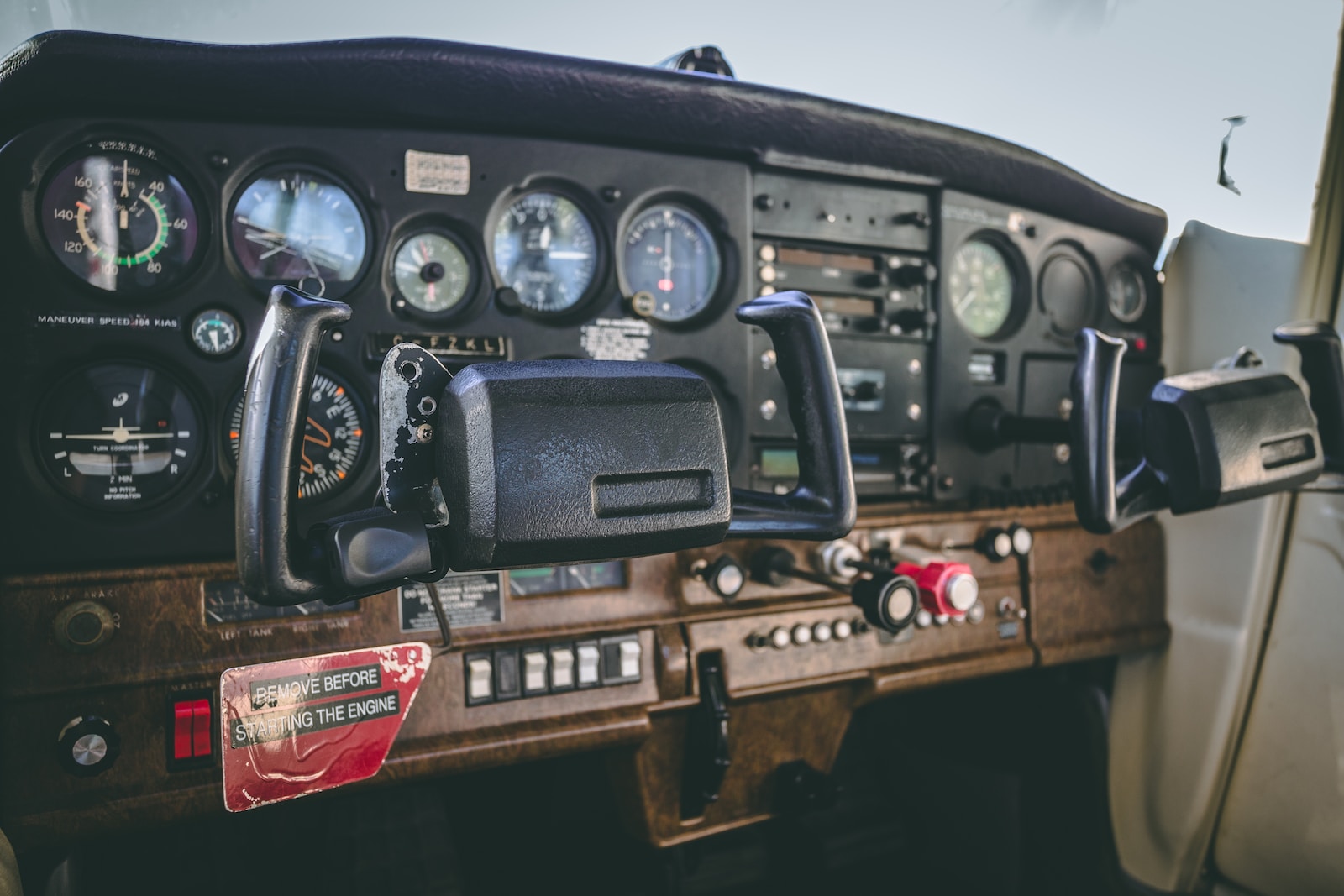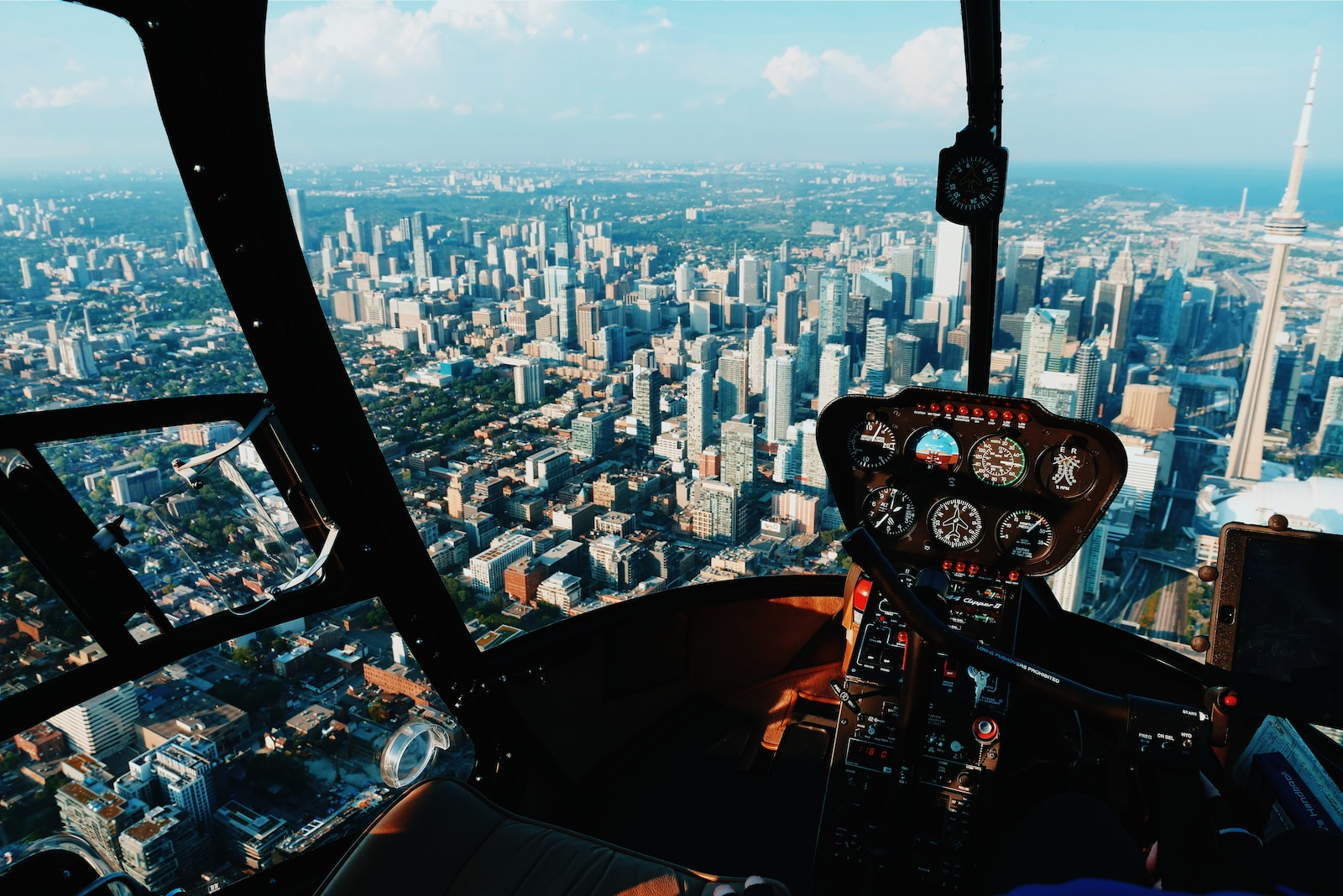Hello!
Looking to spread your wings and take to the skies? Well, you’ve come to the right place. In this article, we’re going to explore the best places to learn how to fly near you.
It can be a daunting task to find the perfect flight school, but fear not, because I’ve got you covered. We’ll dive into the research, evaluate the programs, and assess all the important factors to help you make an informed decision.
So, let’s strap in and get ready for takeoff!
Key Takeaways
- Research flight schools in your area and gather information about their reputation and track record.
- Evaluate the training programs and instructors available at the flight schools, considering success rates and qualifications.
- Consider the condition and variety of aircraft, as well as safety standards and maintenance practices.
- Compare costs, visit schools, and take trial lessons to make an informed decision, trusting your instincts.
Research Flight Schools in Your Area
You should start by researching flight schools in your area to find the best one for you. It’s important to gather as much information as possible before making a decision.
Look for flight school reviews online, where you can read about the experiences of past and current students. These reviews can provide valuable insights into the quality of instruction, facilities, and overall satisfaction.
Additionally, seek out flight school success stories to get a sense of the school’s track record in producing competent and successful pilots. Hearing about the achievements of others who have gone through the program can give you confidence in your choice.
Once you have thoroughly researched flight schools in your area, you can move on to the next step of looking for accredited and certified schools.
Look for Accredited and Certified Schools
When searching for a flight school, it is crucial to check for FAA certification to ensure that the school meets the necessary standards and regulations set forth by the Federal Aviation Administration.
Additionally, looking for accreditation from reputable aviation organizations, such as the National Association of Flight Instructors or the Aircraft Owners and Pilots Association, can provide further assurance of the school’s quality and commitment to excellence.
Lastly, considering the school’s reputation and track record is essential in making an informed decision, as positive reviews and a history of successful graduates can indicate a school’s ability to provide a comprehensive and effective flight training program.
Check for FAA Certification
Before choosing a flight school, it’s important to check for FAA certification. The Federal Aviation Administration (FAA) is the governing body that sets regulations and requirements for flight schools in the United States. By ensuring that a flight school is FAA certified, you can have confidence that they meet the necessary standards to provide quality training.
FAA regulations cover a wide range of areas, including curriculum, aircraft maintenance, instructor qualifications, and safety procedures. These regulations are in place to ensure that flight schools maintain a high level of professionalism and safety. When considering flight schools, it is crucial to verify their FAA certification to guarantee that they adhere to the necessary standards.
This certification demonstrates their commitment to meeting FAA regulations and providing a quality learning experience. Moving forward, it is also essential to look for accreditation from aviation organizations to further validate the school’s credibility and reputation.
Look for Accreditation from Aviation Organizations
Once you’ve confirmed the flight school’s FAA certification, it’s also important to look for accreditation from reputable aviation organizations. Aviation accreditation ensures that the flight school meets industry standards and provides quality training. When conducting flight school research, consider the following organizations and their accreditation:
| Organization | Accreditation |
|---|---|
| National Association of Flight Instructors (NAFI) | NAFI Flight School |
| Aircraft Owners and Pilots Association (AOPA) | AOPA Flight Training Excellence |
| Professional Aviation Maintenance Association (PAMA) | PAMA Certified Training Facility |
| International Council of Air Shows (ICAS) | ICAS Accredited Flight School |
Consider the School’s Reputation and Track Record
Considering the school’s reputation and track record is important when choosing a flight school. Here are some key factors to consider:
-
Inquire about student success: Ask the school about their graduation rates and the percentage of students who pass their exams and obtain their pilot’s license. This will give you an idea of how well the school prepares its students for success.
-
Consider student reviews: Look for feedback from current and former students. Read reviews and testimonials to get a sense of the school’s teaching methods, instructor quality, and overall student satisfaction.
-
Research the school’s history: Find out how long the school has been operating and if they have a proven track record of producing competent and successful pilots. A well-established school with a long history of training pilots can give you confidence in their expertise.
-
Talk to current students or alumni: Reach out to current students or alumni to get their firsthand experiences. They can provide valuable insights into the school’s strengths and weaknesses.
Evaluate the Training Programs
You’ll want to assess the training programs available when deciding where to learn how to fly. It’s important to evaluate the training methods and compare student success rates to ensure you’re choosing a program that meets your needs. Take a look at the table below for a quick comparison:
| Training Program | Training Methods | Student Success Rates |
|---|---|---|
| Program A | Simulator-based | 90% |
| Program B | Hands-on | 80% |
| Program C | Combination | 95% |
| Program D | Classroom-based | 75% |
As you can see, Program C offers the highest student success rates with a combination of training methods. This information can help guide your decision-making process.
Now that you’ve evaluated the training programs, it’s time to assess the instructors and staff.
Assess the Instructors and Staff
When considering a flight training program, it’s crucial to assess the qualifications and experience of the instructors. Look for instructors who are highly skilled and knowledgeable in the field, with a strong track record of successful training.
Additionally, consider the instructor-to-student ratio. A smaller ratio allows for more individualized attention and personalized instruction.
Check the Qualifications and Experience of the Instructors
To ensure you’re getting the best training possible, make sure to check the qualifications and experience of the instructors. When assessing the instructors at a flight training center, consider the following:
-
Instructor credentials: Look for instructors who hold proper certifications and are licensed by the appropriate aviation authorities. Check if they have undergone any additional training or have specific endorsements that align with your goals.
-
Flight experience: Find out how many hours of flight experience the instructors have, both as pilots and as instructors. More experience generally translates to a deeper understanding of aviation principles and better teaching abilities.
-
Specializations: Some instructors may have specialized knowledge in specific areas, such as aerobatics, instrument flying, or commercial aviation. If you have a particular interest or career path in mind, seek out instructors who have expertise in those areas.
By thoroughly evaluating the instructor qualifications and experience, you can ensure that you’re learning from the most knowledgeable and skilled professionals in the field. This will set a solid foundation for your aviation journey.
Next, let’s consider the instructor-to-student ratio…
Consider the Instructor-to-Student Ratio
Considering the instructor-to-student ratio is important to ensure personalized attention and effective learning in your flight training. When choosing a flight training school, it is crucial to evaluate the number of instructors available in relation to the number of students. A low instructor-to-student ratio allows for more individualized instruction and guidance, leading to a higher quality of training. To emphasize this point, let’s take a look at the following table:
| Instructor-to-Student Ratio | Personalized Attention | Effective Learning |
|---|---|---|
| 1:1 | High | High |
| 1:5 | Moderate | Moderate |
| 1:10 | Low | Low |
As you can see, a 1:1 ratio provides the highest level of personalized attention and effective learning, while a 1:10 ratio offers the lowest. By considering the instructor-to-student ratio, you can ensure that your flight training experience is tailored to your needs and goals. With this in mind, it is important to also look for supportive and professional staff who can further enhance your learning journey.
Look for Supportive and Professional Staff
It’s crucial to have a flight training school with supportive and professional staff for an enhanced learning experience. When researching flight training schools, it’s important to consider the qualifications and expertise of the staff. Here are three key factors to look for:
-
Extensive Experience: The staff should have a wealth of experience in the aviation industry, including both flight instruction and real-world flying experience. This ensures that they can provide valuable insights and guidance throughout your training.
-
Industry Certifications: Look for instructors who hold relevant certifications and licenses. These credentials demonstrate their commitment to maintaining high standards of safety and professionalism.
-
Personalized Approach: A flight training school with supportive staff will prioritize individualized instruction. They will take the time to understand your unique learning style and tailor their teaching methods to help you succeed.
By choosing a flight training school with qualified and supportive staff, you will receive high-quality training that prepares you for a successful career in aviation.
Now, let’s explore how to compare costs and financing options for your flight training journey.
Compare Costs and Financing Options
You can easily compare the costs and financing options available for learning how to fly at different locations near you. When considering the cost comparison, it is important to take into account factors such as the type of aircraft used, the number of flight hours included in the training program, and any additional fees for ground instruction or materials.
Financing options vary, but many flight schools offer payment plans, scholarships, or loans specifically designed for aspiring pilots. It is essential to thoroughly research and compare these options to find the best fit for your budget and goals.
Once you have done your cost analysis and have an idea of the financing options available, the next step is to visit the schools and take a trial lesson. It allows you to experience the training environment, meet the instructors, and get a feel for the overall atmosphere.
Visit the Schools and Take a Trial Lesson
Once you’ve done your cost analysis and have an idea of the available financing options, the next step is to visit the schools and try out a trial lesson.
This is an essential part of the process as it allows you to get a firsthand experience of the school’s facilities and meet with current students.
When you visit the school, take the time to explore the classrooms, hangars, and other training areas. Pay attention to the overall cleanliness and organization of the facilities, as this reflects the school’s commitment to quality education.
Additionally, chatting with current students can provide valuable insights into the school’s training programs and instructors.
By visiting the schools and trying out a trial lesson, you can gather important information to help you make an informed decision about your flight training journey.
Now, let’s consider the aircraft fleet…
Consider the Aircraft Fleet
When choosing a flight school, it’s essential to carefully evaluate the condition and variety of aircraft they offer. As a prospective pilot, you want to ensure that the school has modern and well-maintained aircraft that will enhance your learning experience.
Additionally, it’s crucial to consider the availability and access to aircraft, as this will directly impact your training progress and overall convenience.
Evaluate the Condition and Variety of Aircraft
Check out the range of aircraft available and assess their condition before choosing a place to learn how to fly.
One of the most important factors to consider is the variety of aircraft offered at the flight school. A diverse fleet allows you to gain experience flying different types of planes, which will enhance your skills and make you a more versatile pilot.
Additionally, it is crucial to evaluate the safety standards and maintenance practices of the aircraft. Look for flight schools that prioritize regular inspections and adhere to strict maintenance protocols. This ensures that you will be learning in a safe and well-maintained environment.
By considering the variety of aircraft and the safety standards, you can make an informed decision when selecting a flight school.
As you continue your search, remember to look for modern and well-maintained aircraft to further enhance your learning experience.
Look for Modern and Well-Maintained Aircraft
When it comes to learning how to fly, it is crucial to consider the condition and variety of aircraft available. However, it is equally important to look for modern and well-maintained aircraft. This ensures not only a better learning experience but also guarantees safety during your flight training.
Here are a few reasons why you should prioritize modern and well-maintained aircraft in your aircraft selection:
-
Advanced Technology:
Modern aircraft are equipped with the latest avionics and navigation systems, providing a more efficient and immersive learning experience. These aircraft often have advanced safety features and enhanced performance characteristics, allowing you to develop your skills more effectively. -
Safety Standards:
Well-maintained aircraft undergo regular inspections and maintenance, reducing the likelihood of mechanical issues during your training. These aircraft adhere to strict safety standards, giving you peace of mind and confidence while learning to fly.
Transitioning into the subsequent section about ‘consider the availability and access to aircraft,’ it is important to evaluate the options for accessing suitable aircraft for your flight training.
Consider the Availability and Access to Aircraft
Transitioning into the subsequent section about the availability and access to aircraft, it’s important to evaluate how easily you can get your hands on suitable aircraft for your flight training. The first step in this process is conducting an availability assessment. You need to determine if there are enough aircraft available at the flight school or training center you’re considering.
Additionally, you should consider the accessibility of these aircraft. Are they readily accessible or do you have to wait for long periods? It’s crucial to have consistent access to aircraft to ensure uninterrupted training.
Furthermore, aircraft access also encompasses the convenience of scheduling. Can you easily book a slot for your flight lessons without any hassle? This is an important factor to consider, as it affects the efficiency of your training.
Availability and access to aircraft play a vital role in your flight training journey, so it’s crucial to thoroughly evaluate these aspects before making a decision.
When considering availability and access to aircraft, it is also important to assess safety and maintenance standards.
Assess Safety and Maintenance Standards
Make sure you’re aware of the safety and maintenance standards at the flying schools near you. When it comes to learning how to fly, safety should always be a top priority. Before choosing a flying school, it is important to assess the facilities and evaluate the training curriculum they offer.
Look for schools that have well-maintained aircraft and a rigorous maintenance program in place. This ensures that you will be learning in a safe and reliable environment. Additionally, the training curriculum should be comprehensive and up-to-date, covering all the necessary knowledge and skills required to become a proficient pilot.
By thoroughly assessing the safety and maintenance standards, you can make an informed decision about the flying school that is best suited for your needs.
Now, let’s explore the next aspect: looking for additional services and opportunities.
Look for Additional Services and Opportunities
When considering flight schools, it’s important to look beyond just the basic training they offer. Check for job placement assistance programs that can help you secure employment after completing your training.
Additionally, consider if the school offers additional training or ratings that can enhance your skills and make you more competitive in the job market.
Lastly, look for schools that provide networking opportunities and a sense of community, as these can greatly benefit your career in aviation.
Check for Job Placement Assistance
Looking for flight schools near you? Don’t forget to check if they offer job placement assistance.
When considering where to learn how to fly, it’s essential to think about your long-term career goals. Job placement assistance is a valuable service that can greatly benefit aspiring pilots. Flight schools that offer job placement support can help connect you with potential employers, guide you through the application process, and provide valuable career advice. This support can be crucial in jumpstarting your aviation career and ensuring a smooth transition from training to employment.
In addition to receiving quality flight instruction, having access to career support can give you a competitive edge in the job market. So, when researching flight schools, be sure to inquire about the job placement assistance they provide.
Once you’ve secured a solid foundation, it’s time to consider additional training or ratings offered to further enhance your skills and broaden your career opportunities.
Consider Additional Training or Ratings Offered
Don’t forget to explore the additional training or ratings that are offered to enhance your skills and broaden your career opportunities.
In the aviation industry, it’s crucial to stay ahead and constantly update your knowledge and expertise. Consider pursuing additional certifications or specialized training that align with your career goals. These additional qualifications can set you apart from other candidates and make you more attractive to potential employers.
Whether it’s a type rating for a specific aircraft or a specialized course in aviation safety, investing in your professional development can open doors to new opportunities. By continuously learning and expanding your skillset, you demonstrate your commitment to excellence and your willingness to go above and beyond.
As you progress in your journey, look for networking opportunities and community connections that can further support your career growth.
Look for Networking Opportunities and Community
Networking events and community connections can provide valuable support and opportunities for career growth. Engaging with your community and participating in networking opportunities can open doors to new experiences and connections that can help advance your career. Here are three key benefits of networking and community engagement:
-
Access to resources: Networking events and community gatherings often bring together professionals from various industries, creating a rich pool of knowledge and resources. By engaging with these individuals, you can tap into their expertise, gain valuable insights, and access resources that can enhance your career development.
-
Opportunities for collaboration: Networking events provide a platform for collaboration and partnership opportunities. By connecting with like-minded professionals, you can explore potential collaborations, joint ventures, and projects that can expand your professional network and lead to exciting career prospects.
-
Support and mentorship: Engaging with your community allows you to build relationships with mentors and peers who can offer guidance and support. These connections can provide valuable advice, help you navigate challenges, and serve as a support system throughout your career journey.
By actively participating in networking events and engaging with your community, you can leverage these opportunities to boost your career growth and development.
Transition: Trusting your gut feeling and making an informed decision is crucial when seeking the best places to learn how to fly near you.
Trust Your Gut Feeling and Make an Informed Decision
Sometimes, you just have to trust your instincts and gather all the necessary information to make the best decision. When it comes to finding the best places to learn how to fly near you, it’s important to rely on your gut feeling and gather as much information as possible.
Trusting your instincts can often lead you in the right direction, especially when it comes to something as important as learning to fly. However, it’s equally important to gather all the necessary information to ensure that your decision is well-informed.
By researching different flight schools, talking to experienced pilots, and considering factors such as location, reputation, and cost, you can gather the information you need to make the best decision for your flying journey.
Trust your instincts, but also arm yourself with knowledge to ensure a successful learning experience.
Frequently Asked Questions
What are the requirements to obtain a pilot’s license?
To obtain a pilot’s license, you need to meet flight school prerequisites and follow the steps to becoming a licensed pilot. These include acquiring a medical certificate, completing flight training, passing written and practical exams, and accumulating a certain amount of flight hours.
How long does it typically take to complete flight training?
Flight training duration can vary, but it typically takes around 6-12 months to complete. Costs vary as well, ranging from $8,000 to $15,000. It’s an investment, but the rewards of becoming a pilot are priceless.
Can I choose to specialize in a specific type of aircraft during flight training?
Yes, you can specialize in helicopter training during flight training. Choosing a specific aircraft offers benefits such as focused training, better job opportunities, and expertise in a particular field.
Are there any age restrictions for enrolling in flight school?
There are age restrictions for enrolling in flight school, but starting flight training at a young age has numerous benefits. It’s like planting a seed that grows into a skilled pilot.
Are there any scholarships or financial aid options available for flight training?
Yes, there are scholarship options and financial aid options available for flight training. These can help offset the costs of learning to fly and make it more accessible for aspiring pilots.
Conclusion
After conducting thorough research and evaluation, I’ve come to the conclusion that finding the perfect flight school is like uncovering a hidden gem.
It’s a journey that requires careful consideration of accredited schools, well-rounded training programs, experienced instructors, and top-notch safety standards.
It’s also about comparing costs and financing options, and trusting your instincts to make an informed decision.
So, embark on this adventure and let your dreams take flight in the best place to learn how to soar through the skies.
With a heart that soars as high as the skies, Aria, affectionately known as “Skylark,” is the driving force behind Soaring Skyways. Her journey into the gliding world began as a young dreamer gazing up at the soaring birds, yearning to experience the weightlessness and freedom they embodied. With years of experience both in the cockpit and behind the scenes, Aria’s commitment to the gliding community is unwavering.










